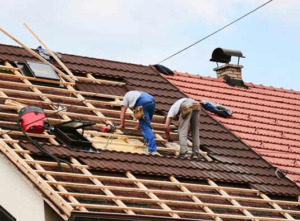If your tankless water heater shuts off randomly, check that the circuit breaker has not tripped. Also, make sure your gas valve is open and that you have paid your gas bill.

If your water is discolored or has a foul odor, flushing your tankless water heater may be needed to eliminate mineral buildup and loose/damaged components. Contact Tankless Water Heater Repair Denver for professional help.
One of the most common problems with tankless water heaters is leaking. This can be a result of damaged or faulty components, such as the pressure relief valve. It can also be caused by corrosion, which happens when metallic parts are exposed to oxygen over time.
Leaking can occur in the gas lines, water supply lines, or on the unit itself. It’s important to inspect and repair these issues promptly to prevent leaks and possible water damage.
If your tankless water heater is leaking, it’s important to turn off the power supply to the unit before performing any repairs. Then, check the circuit breaker to ensure that it hasn’t been tripped. It’s also important to check the water supply valves connected to the unit and ensure that they are fully open. If you are unable to locate the source of the problem, it may be necessary to contact a professional technician for further inspection and repair.
Another common tankless water heater problem is alternating temperatures in the shower. This can be caused by several factors, including the fact that someone else in your home could have showered just before you. When this occurs, the water gets cold while the tankless heater reheats it for your use. To remedy this, it’s recommended that you shut off any additional water faucets to prevent excess use of your water heater.
You can also try flushing or descaling your water heater to remove sediment and mineral deposits that may be causing temperature fluctuations. Adding a water softener and sediment filter can also help minimize these problems in the future.
A hot water heater can also experience ignition failure if the burner is not ignited properly. This is usually the result of a dirty or worn out igniter or flame sensor. Cleaning or replacing these components can fix the issue and return your water heater to normal operation. It’s important to note that this is an advanced repair, so it should always be performed by a professional technician. Attempting to fix this issue yourself can be extremely dangerous.
Frozen Pipes
Frozen pipes are a major pain and can prevent your tankless water heater from working. They can also cause damage to your other plumbing fixtures and lead to expensive repairs. If you suspect a frozen pipe, turn off the gas and power to your unit. You should also close the cold water, hot water, and temperature controls. It’s best to drain your unit before turning it back on. A plumber will be able to help you with this process.
The next step is to locate the frozen section of pipe. This is easier if the pipe is located outside, in the basement, or in crawl spaces. If it’s in a wall, you’ll need to hire a licensed plumber with the proper equipment to safely thaw it. A heat gun or hair dryer can be used to thaw the pipe, but you should avoid using open flames like blow torches or kerosene heaters.
You can also try reversing the flow of water through the frozen pipe to thaw it out. This works well if the pipe is small and has a smooth surface, such as PVC pipe. If the pipe is a larger diameter, you can use a heat lamp to warm it. Wrapping a large towel around the frozen section of pipe can also work, but make sure the heat is directed directly onto the freezing area and not your skin.
If you still don’t have hot water after thawing the frozen pipe, it could be a sign that there is another issue with your tankless water heater. This might include problems with your gas line, flow sensor, or plumbing crossover when hot and cold water mix. A professional plumber will be able to identify the problem and provide appropriate solutions.
Preventing frozen pipes is a simple task that can save you from having to deal with a burst pipe and resulting repairs. Applying fiberglass or polyethylene insulation to all the exposed piping can make it harder for heat to escape during freezing temperatures. You should also consider installing a freeze protection kit or heat tape on the piping. Keeping the distance between your water heater and point of use as short as possible will also reduce freezing risks.
Noisy
While tankless water heaters don’t make as much noise as their tanked counterparts, if you notice loud clattering sounds or vibrations from your unit, it may be time to call for a repair. These rattling sounds are often caused by loose components. This is especially common in older units that have been subject to long-term use. A professional can tighten loose screws and connections to alleviate these issues. If the problem is caused by a gas issue, a professional should also be called to assess and adjust the unit’s gas pressure.
Hissing: A hissing sound from your tankless water heater can indicate that there is a buildup of sediment on the heating element. This is a fairly common issue that can be addressed with regular flushes of the unit. This will require shutting off the power and a drain line, connecting a hose to the unit’s flush valve, turning on the gas valve, and running the water through the system for several minutes. Following the manufacturer’s instructions for your particular unit is important to ensure that the sediment and scale are removed properly.
Banging: Banging sounds from your tankless water heater are typically a sign of “water hammer,” which occurs when water passes through pipes forcefully enough to knock them against each other or the wall. While it may not seem serious, this type of sound can cause damage to your home’s plumbing and walls if left unchecked. Your plumber can install a device to prevent this from occurring in the future and help you to avoid expensive repairs.
Screeching or Whistling: High-pitched screeching or whistling sounds from your tankless water heater can be a sign of loose valves or improper air flow. Check your unit’s temperature and inlet/outlet valves to make sure they are properly adjusted (as per the manufacturer’s instruction manual) and that no obstructions are present.
Rumbling Noises: A rumbling sound from your tankless water heater is usually a sign that there is an accumulation of sediments in the unit. This can be caused by long-term usage or a lack of maintenance. Your professional can clean the unit to address this problem and restore quiet operation.
Cold Water Sandwiches
One of the most frustrating problems with tankless water heaters is the cold water sandwich effect. This happens when you’re taking a shower and the warm, comfortable water you’ve been enjoying turns into ice cold water for a few moments before returning to hot again. This is due to a small amount of cold water getting past the heat exchanger when you turn on your faucet or showerhead. This can be caused by someone else using the same shower or sink right before you, or it can happen if your tankless water heater has been turned off for a while.
This can also occur if your plumbing system was done incorrectly or if the pressure balancing shower valve is in need of repair. The cold water sandwich problem can be difficult to diagnose without the help of an expert. This can include examining your gas line size, recent plumbing changes, patterns of water use and more.
A recirculating pump can also be installed to prevent this issue by creating a continuous loop between the tankless water heater and your outlet valves. This can solve the problem by ensuring that there’s always heated water waiting in the pipes for you to use. However, the recirculating pump may increase your energy consumption so it’s not ideal for every household.
Another common cause of this problem is limescale build up on the heating elements in your tankless water heater. A professional can clean the unit and remove any deposits with a descaling solution to keep your water warm and free from mineral build-up.
If you’re still having trouble with your tankless water heater, don’t hesitate to contact us for assistance. We can help find the right solutions for your home and get your water running smoothly again! We offer a variety of services to address all of your tankless water heater needs and can provide tailored advice that addresses your specific situation. Call today!


